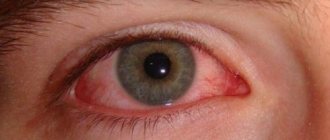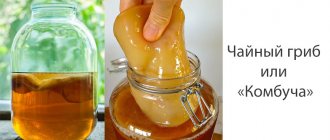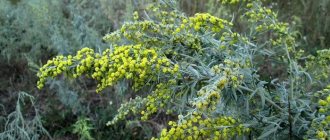Walking through the forest or even in an ordinary park, you could more than once see irregularly shaped growths on birch trees. This is chaga, which at best is used for children's crafts, at worst it is simply thrown away or burned if it ends up on cut trunks or firewood. Meanwhile, this unique mushroom can provide invaluable health support. We tell you what its benefits are, how to choose, store and make tea or coffee from chaga.
How does chaga grow?
Chaga (Inonotus obliquus) is a parasite that grows on cracks or damaged areas of birch tree trunks from the spores of the mulberry fungus. Under the sun, the porous and uneven surface of the birch mushroom turns jet black, and the inside is usually a bright orange hue. It can also be found on other trees: ash, maple, alder and mountain ash in the forests of Russia, Northern Europe and Asia (Korea and Japan), Canada and the USA. But only birch mushroom is considered useful.
Official medicine confirms that people have been using chaga for centuries for a reason: it actually contains many useful substances, one of which is melanin. A record amount of oxalates (oxalic acid salts) was also found in chaga - more than in any living organism.
Collection and preparation
The mushroom is harvested at any time, but it is easier to find it from late autumn to spring, when there is no foliage. In addition, during this period the greatest biological activity of the fungus is observed. To search, they go deep into the forest (removing from trees along busy roads is not recommended), choosing strong trees.
It is not worth cutting the chaga from dead or diseased trees or the bases of old trees - the activity of such chaga is insignificant. Old chaga that is exclusively black in color, which is very large in size and has already crumbled, is also not suitable.
The growth is cut off with an ax under the base, the loose, light-colored part is cut off. The raw materials needed for harvesting are the outer part and the solid middle, without wood residues and loose mass.
The collected chaga is cut into pieces of about 10 cm, dried in dryers or ovens at a temperature not exceeding 60 ºС. In summer, ventilated attics and closed sheds are suitable for drying. Store in a tightly closed jar, exclude moisture, since chaga can quickly become moldy. Shelf life – 2 years.
What is chaga called outside of Russia?
This mushroom has other names, one of the most interesting is kreftkjuke, which translated from Norwegian means “mushroom for cancer.” This, of course, very boldly and succinctly informs us about the benefits of the inconspicuous birch parasite that people have noticed. Shulta (shulpa, shulga) is the traditional name for chaga among the peoples of the Far East; in other languages it is called “birch canker”, “black sponge”, “birch plug” and “witch’s mushroom”.
The core of the growth is a beautiful orange color and has a fairly hard texture. Usually it is dried and crushed into small pieces or even into powder, after which mixtures are made for brewing tea (often other medicinal herbs are added to them or oil, alcohol extracts and nutritional supplements are made from chaga in capsules). For centuries, our ancestors prepared kvass with honey from birch sap or chaga decoction. During the time that the mushroom grows on the tree, it manages to absorb all the healing properties of birch sap and give them to us in a more concentrated and fermented form.
Cultural history of chaga
As you can see, the northern peoples of all countries of the world have been well aware of the healing properties of chaga since ancient times. In many languages, it was the word “chaga” of Komi-Permyak origin that became entrenched: apparently, the indigenous peoples of the Urals were the first to discover the birch mushroom.
The famous Persian physician and philosopher Avicenna mentioned chaga in his medical works, noting that the northern tribes (who were famous for their fantastic health and physical strength) drank drinks from it constantly. It is known that Vladimir Monomakh, who ruled Kievan Rus in the 12th century, became a big fan of chaga after he was cured of lip cancer with birch growth powder. He drank a decoction of birch mushroom every day and got sick extremely rarely, according to eyewitnesses.
In the 16th–17th centuries, Russians used chaga to treat cancer, gastritis and ulcers, tuberculosis, heart disease, liver disease and other internal organs.
Nobel laureate Alexander Solzhenitsyn described the use of chaga in his novel “Cancer Ward” in 1968: in it, in particular, it is mentioned that residents of Siberian regions who, to save money, brew chaga instead of tea and coffee, do not get cancer at all. A few years after publication, scientists in different countries began to conduct in-depth research into the healing qualities of birch mushroom. It still cannot be said that all the properties of chaga have been studied and recorded, but even the knowledge that has already been obtained is enough to understand that this is truly a unique mushroom that helps restore health and prevent many diseases.
The taste of chaga
The taste of chaga is much better than one would expect from its modest and nondescript “appearance.” It contains notes of vanilla and nuts, the drink has a subtle and strong aroma that many people really like. If it seems too earthy and bright, you can tone it down a little by adding honey.
But the usual sugar, milk and lemon should not be added to the broth. It is also prohibited to consume mushrooms in any form simultaneously with alcoholic beverages. Before you start drinking chaga while taking antibiotics or other strong medications, be sure to get your doctor's approval.
Birch mushroom: contraindications
Contraindications to the use of chaga are chronic colitis and chronic dysentery. Reception of chaga infusion is limited for diseases accompanied by fluid retention in the body. When treating chaga, the use of penicillin, which is its antagonist, and intravenous glucose are contraindicated. It is recommended to adhere to a dairy-vegetable diet and exclude sausages, smoked meats, canned food, spicy seasonings from the diet, limit animal fats, meat products, do not drink alcoholic beverages and do not smoke.
Tags: birch mushrooms amazing healing properties chaga—
Chaga composition and beneficial properties
The parasite, which has settled on a tree, constantly feeds on the juices of its host. As a result, the birch tree dies within a few years, and the growth is filled with vitality. Chaga contains almost the entire periodic table:
• B complex of vitamins (beneficial for the nervous system, healthy skin and nails);
• vitamin D (read more about its benefits in a large material);
• potassium (helps the functioning of the central nervous system and supply tissues and organs with oxygen);
• vitamin C (increases immunity, protects tissues and organs);
• amino acids (needed for normal functioning of the hormonal and endocrine systems, muscle growth and metabolism);
• fiber (helps digestion, necessary for the development of proper intestinal microflora);
• copper (helps normalize metabolism);
• selenium (regulates the functioning of the thyroid gland);
• sodium (salts maintain water-salt balance in the body);
• zinc (slows down the aging process of cells);
• iron (starts the process of synthesis of hemoglobin and red blood cells in human blood);
• manganese (helps the correct and effective absorption of iron, controls blood sugar and the amount of thyroid hormones);
• magnesium (needed for normal muscle function, including the heart, helps normalize blood pressure);
• calcium (regulates blood clotting, necessary for bone growth and muscle function);
• retinol (responsible for eye health);
• cobalt (regulates the functioning of the endocrine system);
• nickel (increases insulin productivity, helps deliver oxygen to all cells);
• silicon (necessary for healthy joints, hair and nails).
The well-known drug “Befungin” is made from chaga extract, which is often recommended by doctors for diseases of the stomach and intestines, to strengthen the immune system after infectious diseases or operations, for anemia and asthenic conditions.
Birch mushroom: use in folk medicine
A decoction of the mushroom lowers arterial and venous pressure and reduces heart rate. When used externally, chaga exhibits anti-inflammatory, healing and analgesic effects. In folk medicine, birch mushroom has been known since the 16th century. It is used for diseases of the gastrointestinal tract, cancer, as a general strengthening and tonic.
Chaga has found application in:
- diseases of the stomach, intestines, liver and spleen
- oncological diseases
- insomnia, to calm the nervous system;
- metabolic disorders;
- after suffering serious illnesses and operations as a general tonic;
- to increase the body's resistance to infectious diseases;
- psoriasis, eczema and other skin diseases (wounds, injuries, burns, frostbite, juvenile acne, inflammation, peeling of the skin, insect bites, herpesvirus lesions of the skin and mucous membranes, leukoplakia).
Birch mushroom: use in medicine
The following chaga preparations are used for treatment:
“Befungin” is a semi-thick chaga extract with the addition of cobalt salts (1% CoCl2 or 1.5% CoSO4). Before use, shake the bottle, dilute 3 teaspoons of the drug in 150 ml of warm boiled water and then take 1 tablespoon 3 times a day 30 minutes before meals. Some authors recommend preheating the bottle with the extract to liquefy it by immersing it in water at a temperature of 60–70°C for 8–10 minutes, after which 2 teaspoons of “befungin” are diluted in 3/4 cup of warm water and taken according to the same scheme. The drug is stored in a cool place, protected from light.
Preparation of chaga infusion
The washed piece of mushroom is poured with cold boiled water to soften for 4–5 hours (do not throw away the water after soaking!). Then they are ground on a grater or passed through a meat grinder. The crushed mushroom is poured with boiled water at a temperature of 40–50°C, since at higher temperatures chaga loses its activity, at the rate of 1 part mushroom to 5 parts water (use water from the first soaking).
Leave for 48 hours in a dark, cool place with rare stirring (3-4 times). The infusion is filtered through 3-4 layers of gauze, and the remainder is squeezed out and water from soaking the mushroom is added to the extraction to the original volume. The infusion is good for 4 days. It is stored in a cool, dark place. Drink gradually 0.5–1 glass 1–4 times a day 30 minutes before meals (at least 3 glasses a day).
For the treatment of gastritis, gastric and duodenal ulcers, take the infusion 1 tablespoon 3 times a day 30 minutes before meals.
For tumors of the pelvic organs (rectal cancer, prostate cancer), warm therapeutic microenemas of 50–100 ml of infusion at night or 2–4 tablespoons 2 times a day are additionally prescribed.
For patients who are contraindicated from introducing large amounts of liquid into the body for diseases accompanied by fluid retention in the body, prepare a double-strength infusion (2 parts mushroom to 5 parts water) or it is recommended to use the infusion instead of tea or other drinks.
Chaga infusion for the treatment of gastritis
For the treatment of chronic gastritis with reduced secretory function, the infusion is prepared using the following technology: 1 tablespoon of chaga powder is poured into a glass, poured with warm water (40–50°C), and left for 6 hours. The entire infusion is drunk in sips 30 minutes before meals in 3 doses. The course of treatment is 5–6 months.
Chaga infusion to improve blood circulation
To improve blood circulation and restore the blood formula, use chaga extract, which is prepared using the following technology:
2 teaspoons of crushed mushroom are infused for 48 hours in 150 ml of warm boiled water and filtered. Take 1 tablespoon 10 minutes before meals. Treatment with chaga preparations is carried out in courses of 3–5 months with short breaks between them of 7–10 days.
When treated with a mushroom infusion, the patient is prescribed a predominantly dairy-vegetable diet, limiting the intake of meat and fats and excluding canned food, smoked meats, and spicy seasonings. You should also not administer intravenous glucose or use penicillin. Treatment with chaga drugs is carried out in courses of 3-5 months. with breaks of 7-10 days.
For what diseases is chaga especially effective?
It is perhaps difficult to find an area of application in which chaga would be useless. Already due to its anti-inflammatory immunomodulatory properties, it can become, if not an independent medicine, then an excellent health-supporting supplement. We list the main indications for regular consumption of chaga tea or coffee.
Lower blood pressure
Research shows that the harmful effects of metropolitan air are a factor contributing to increased blood pressure. This can lead to heart attacks, strokes and other cardiovascular problems.
The antioxidants contained in chaga can help lower blood pressure and prevent deterioration of the heart and blood vessels.
Immune support
Cytokines are the “messengers” of immunity. Proteins that are necessary for the successful synthesis of leukocytes (they are the “first line” of defense of the immune system from external influences).
Some studies in mice have shown that chaga promotes the synthesis of cytokines, supporting the immune system and allowing cells to effectively “communicate” with each other, which helps to successfully fight infections and viruses.
Slowing down the aging of the body
Oxidative stress (destruction and death of cells due to oxidation) causes the body to age. We develop wrinkles and gray hair, our skin dries out and becomes thinner. The main causes of aging (besides natural ones) are the harmful effects of ultraviolet radiation and dirty urban air.
Antioxidants in topical and internal products can slow down the aging process of body tissues or even reverse visible signs of aging. The active substances of chaga are effective in maintaining health at the cellular level, rejuvenating and restoring the skin.
Women Health
Chaga has been used in obstetric and gynecological practice for centuries. With the help of birch mushroom, inflammation and fibroids, erosion and endometriosis are treated. Chaga solution and decoction are used in different concentrations both for local external use and as a drink.
Man's health
Traditional healers and lovers of natural self-medication methods say that regular consumption of chaga powder tea has an excellent effect on male potency and hormonal levels: the drink enhances libido, increases endurance during sports or other intense physical activity.
Reducing cholesterol levels
Chaga mushrooms contain many antioxidants that reduce levels of low-density lipoprotein (the so-called “bad” cholesterol). High cholesterol levels cause a risk of heart and vascular diseases, so birch mushroom may also be useful in the fight against cardiovascular diseases.
Liver damage
Chaga may treat or slow down certain liver diseases, a 2015 Korean study suggests. It turned out that a concentrated chaga decoction protects liver cells and helps alleviate inflammation that occurs during chronic changes in organ tissue (for example, viral hepatitis, cirrhosis or obesity).
Diabetes
Chaga helps in the treatment of diabetes. This was proven during a study conducted in 2014. Scientists tested the assumption that plant polysaccharides have a beneficial effect on blood sugar levels. It turned out that those contained in chaga have a very strong effect.
Problems with teeth and gums
In dental practice, chaga is often used to treat inflammation of the oral mucosa, gums and teeth: sore spots are lubricated with the decoction, and the teeth are rinsed (at the same time taking the drug orally). Chaga extract has shown itself to be very effective in healing gums after tooth extraction and similar surgical interventions.
Cancer
A 2021 study published in the journal Ethnopharmacology suggests that chaga may have anti-cancer effects. An alcoholic extract of chaga caused apoptosis (programmed cell death) in all samples in a series of test tube studies involving lung cancer cells.
Preventing side effects after taking medications
Drinking chaga tea can prevent the side effects of taking strong medications that are prescribed for serious cases such as chemotherapy, radiation and chronic pain.
Skin diseases
Psoriasis, allergic dermatitis and eczema, irritation and peeling, ulcers and acne - such ailments are successfully treated with chaga tincture or decoction. Treatment that is carried out in combination with therapy for inflammatory processes of the gastrointestinal tract, pancreas, gallbladder and liver is especially effective. The number of papillomas and condylomas can also be reduced if you regularly treat the skin with a solution of birch fungus.
Chemical composition
A complex of biologically active substances was found in the fungus:
- water-soluble pigments combined into a chromogenic polyphenolcarbon complex;
- triterpenoids;
- agaricic, oxalic, acetic, formic, butyric, para-hydroxybenzoic, vanillic acids;
- sterols;
- resins;
- polysaccharides;
- lignin;
- cellulose;
- tannins;
- a large number of macro- and microelements, especially potassium and manganese.
The therapeutic effect in malignant tumors is associated with the action of sterols and agaricic acid.
Possible contraindications for using chaga
Little is known about the safety of long-term use of chaga preparations. We know that a negative reaction of the body can manifest itself in allergic rashes, nasal congestion, general weakness, and skin irritation in certain areas, for example on the fingers, stomach, cheeks.
The substance oxalate is of particular concern because it can affect the kidneys. Oxalate is considered an antinutrient because it interferes with nutrient absorption and can quickly bind to calcium, causing the formation of kidney stones.
Because chaga may affect blood glucose levels, it should be used with caution in people on antidiabetic medications, including those taking insulin. This may cause hypoglycemia (abnormally low blood sugar).
It is not known how chaga affects children or pregnant or breastfeeding women.
Reviews from real people
What do people think about birch mushroom?
Feedback on the forum
Feedback on the forum
Feedback on the forum
Feedback on the forum
Feedback on the forum
Feedback on the forum
Feedback on the forum
There are many reviews and they are all positive.
Chaga selection, powder preparation and storage
Widely available for purchase online and in natural food stores, chaga is most often sold in powder form for use in teas and infusions. You can buy bottled chaga tinctures and extracts, tea bags, and dried chaga pieces. Of course, no one is stopping you from going to the nearest forest on your own and breaking off a mushroom straight from a birch tree.
The difficulty of using chaga is that doses for single use can vary depending on the brand and the content of birch mushroom in the collection (even of the same brand). Herbal remedies are not strictly regulated in any country in the world, so there are no tests to ensure a standardized dose or even the purity of the product.
Chaga tea
To brew chaga tea, only wild chaga is suitable. The finer the powder into which it is ground, the more active ingredients the chaga will release into the tea. Chaga tea is usually boiled, but this is not necessary. You can cook it at temperatures below 100 °C, without bringing it to a boil, but simply increasing the heating time. The longer the cooking time, the more “interesting” things appear in the broth, giving it an attractive taste. For example, after a few hours the decoction will contain not only melanin and polysaccharides, but also vanilla acid contained in the chaga, which will give the tea a syrupy taste with notes of vanilla.
Stainless steel or glass teapots are best for brewing. The kettle is filled with clean cold water, to which you add ground chaga and, if desired, other mushrooms and/or herbs. Before turning on the kettle or putting it on the fire, give the water a few minutes to soak the mushroom and herb powder (alternatively, if you are adding herbs, it is best to pre-soak them before steeping them in room temperature water for 5-30 minutes). If you only have chaga in the kettle, you can safely boil it for about 20 minutes (but you can also use a water bath at low boil for up to an hour, it will be tastier). If it is a mixture of chaga with herbs, the correct method would be to slowly (over half an hour to an hour) raise the temperature to 70-80 °C. This will allow the active substances of herbs to be extracted most completely and carefully. Strain the finished drink through a strainer. To taste, you can add nut milk, coconut milk, cream, honey, and spices. Brewed tea in a container with a lid is stored in the refrigerator for up to a week.
An interesting and very simple way to maximize the extraction of active substances from chaga is to freeze chaga tea . After cooling, the finished decoction should be placed in the freezer along with pieces of chaga . When frozen, those chaga cells that remain intact after crushing and boiling burst. Once removed from the freezer and reheated, they will become a decoction.
What to look for when buying chaga
Read the product label. The more information you get, the better. Ideally, the label should indicate the name of the species, Inonotus obliquus, as well as the country of origin. Check to see if any additional ingredients have been added. If they are available and you don't know them or don't understand their properties, talk to your pharmacist.
Check the color. The color of chaga powder can range from bright orange to dark brown. Darker colors indicate that the mushroom was not properly cleaned before grinding, and the darkened surface (sclerotium) can be toxic to humans.
Choose an organic product. Given the lack of testing, all herbal supplements theoretically carry a risk of contamination. To reduce it, choose brands that are organic: USDA organic certification ensures you won't be exposed to pesticides and other chemicals.
Summary
The fact that chaga helps the body fight the scourge of the 21st century - oncology - is no longer in doubt. We will also see how the research goes and whether further study of chaga extract for the treatment of coronavirus will give a positive result. The judicious use of chaga preparations together with competent professional treatment makes it possible, if not to cure, then to suspend many diseases and achieve stable remission. We sincerely wish health to every person who goes through this difficult path to recovery, and we will also be glad to hear your feedback about birch chaga.
Making drinks from chaga
The easiest way to make chaga tea or coffee is to use tea bags. If you choose powder, add a teaspoon to a cup of boiling water, let it steep for five minutes and strain using a fine tea strainer.
When using chaga pieces, break them into centimeter-sized pieces. Add four to five pieces to one liter of water and cook for 15 minutes to three hours. The longer you cook the mushroom, the deeper, brighter and richer the taste and the higher the concentration of nutrients.
What to do with fresh chaga
If you are not sure that you have discovered chaga, it is better to buy ready-made powder for preparing the drink. Chaga is often confused with false tinder fungus: the main difference between the latter is that it can grow on both dead trees and stumps, while chaga grows only on living birch. If you find chaga on an already dried, fallen tree, there is no point in using it - there will be no benefit.
Other types of mushrooms that can also be found on birch trees, usually with a smoother surface, can be painted in different colors, they have different stripes, circles and other patterns. Chaga always looks like a piece of coal or burnt wood, the surface is uneven, covered with cracks and chips; It's porous and doesn't smell like anything.
Let's assume that you definitely found chaga, separated the growth from the birch trunk (don't forget to take a strong knife or ax!) and brought it home. What's next?
Fresh chaga must be thoroughly dried before use. To do this, place the mushroom in the oven at a temperature of about 50–70 degrees for 24 hours (on a hot day, you can dry the chaga in direct sunlight, this usually takes about three days). When drying in an attic or under a shed, constantly turn the pieces of chaga over so that they do not become moldy and begin to rot. It is important that there is constant access to fresh air. There is no need to further process or wash the chaga before drying, but debris in the form of leaves or needles can be carefully brushed off.
After drying, remove the darkened outer skin and grate the mushroom on a fine kitchen grater. You can grind it into powder using a coffee grinder.
Keep chaga in an airtight container, ideally in the refrigerator or freezer. This way you can store the mushroom for up to two years. Any moldy pieces or parts of the mushroom that have changed the smell to musty or even simply unpleasant should be thrown away immediately.
In cosmetology
Chaga is used in cosmetics to maintain healthy skin and hair. Creams and ointments containing chaga provide a rejuvenating effect - the skin of the face is tightened, fine wrinkles are smoothed out.
Mask for oily skin
1 tsp. mix rye flour with 1 tsp. honey Add the yolk and 1 tsp. chaga powder. Mix and apply to face for 15 minutes, then rinse with warm water.
Mask for dry skin
To prepare it, 1 tsp. mix olive oil with 2 tbsp. l. crushed chaga. Add the yolk, mix, add ⅓ cup of boiling water and leave for 1 hour. After this, apply to the face for 15 minutes, then rinse with warm water.








